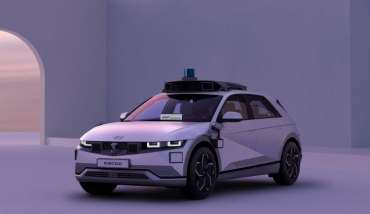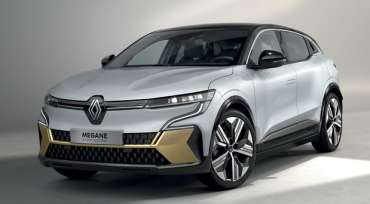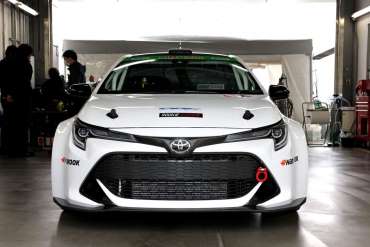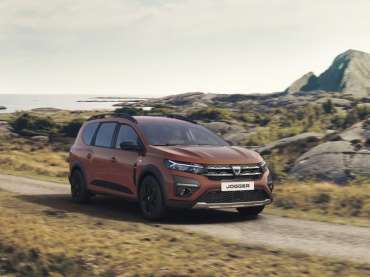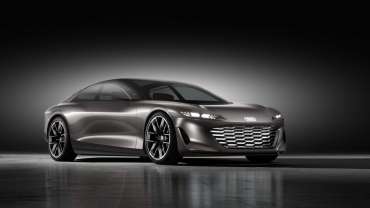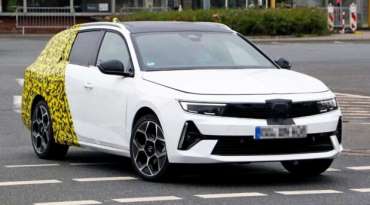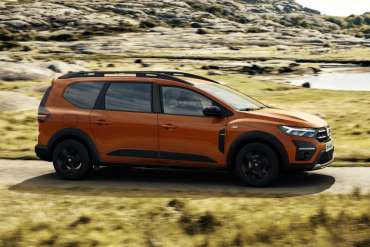
World Car Blog
Hyundai introduced robots based on the interesting Ioniq 5 model
The all-electric Ioniq 5 robotaxi is the first commercial vehicle from Motional and Hyundai and will be used in public driving around the city without a driver, starting in 2023.
Motional and Hyundai Motor Group have discovered a robot taxi based on the Ioniq 5 model, which was launched worldwide earlier this year. Robotaxi uses SAE Level 4 autonomous vehicles that can be safely operated without a driver. The robot taxi is a vehicle with zero exhaust emissions.
robotaxi, ioniq 5, car, car HyundaiPhoto: Hyundai
The set of sensors is prominent on the outside of the vehicle, in order to make it easier to distinguish robot taxis from man-operated vehicles.
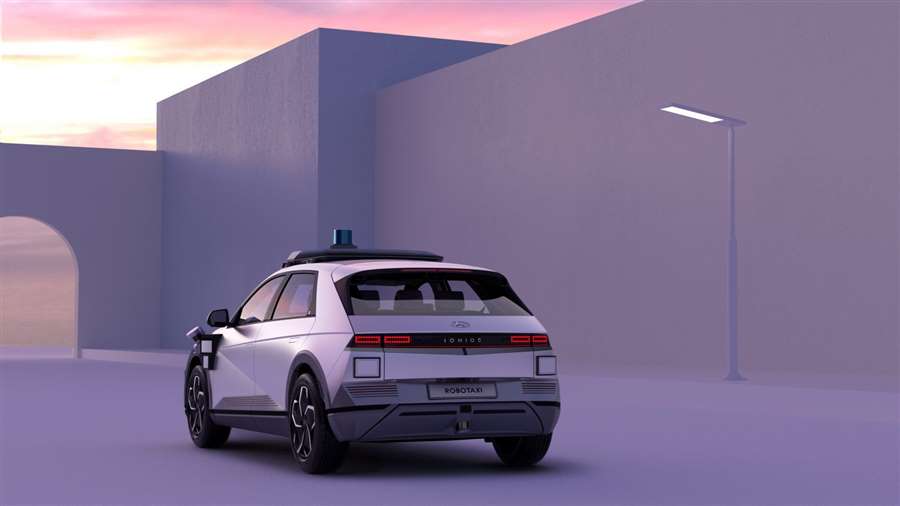
Robotaxi has more than 30 sensors - a combination of cameras, radar and lidars - that provide powerful 360-degree perception, high-resolution photography and remote object detection for safe autonomous operation in a variety of driving environments.
The robot will be equipped with Motional's proven driverless technology, which includes advanced machine learning systems, which enables the vehicle to safely cope in challenging and complex situations.

Following in the footsteps of Hyundai Motor Group's Electric Global Modular Platforms (E-GMP), a dedicated electric vehicle platform (BEV), the interior of the Ioniq 5 robot taxi provides passengers with ample space to work, relax and socialize while driving without a driver.
The interior of the vehicle will also include a part of the interface that refers to the driver himself to allow passengers to communicate with the vehicle itself while driving, such as directing the vehicle to additional stops.
There are several safety systems in each function, such as navigation, steering, braking and power, to make every ride safe and quiet.
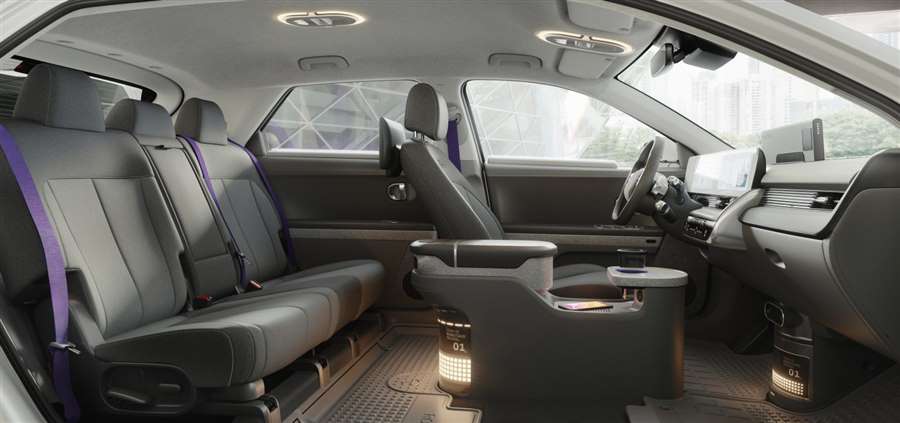
Motional will also be able to provide passengers with remote support for Ioniq 5 robot taxi vehicles in the event of some unforeseen circumstances such as road works or floods.
In that case, the Motional support operator will be able to connect to the vehicle immediately and direct it to a new path. Motional and Hyundai Motor Group will present the Ioniq 5 robot taxi for the first time at the IAA Mobility Fair in Munich, from September 7 to 12.
Renault Megane E-Tech Electric in the first pictures
As a reminder, Renault also unveiled a new electric concept car called the Megane eVision at the eWays event in mid-October last year.
As announced at the time, this is a study announcing the future serial model of the Megane E-Tech Electric. Meanwhile, the French manufacturer has several times released teaser images announcing the Megane E-Tech Electric (in the form of an elevated hatchback), including those that reveal, among other things, a central touch screen and a digital information display.
Since its official premiere will be in a few days (it will also be exhibited at the Munich Motor Show), it is not surprising that these first factory photos have already appeared in public today.
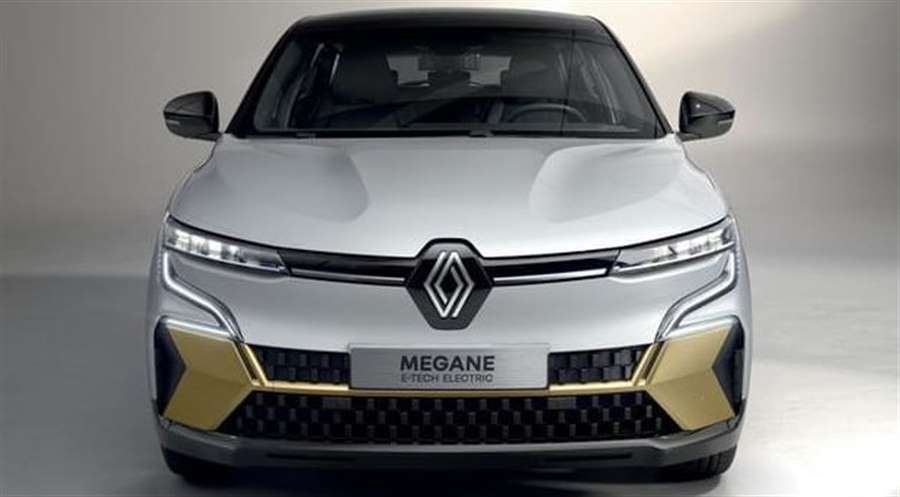
An earlier statement points out that the interior is characterized by the most advanced technology and state-of-the-art screens, as well as refreshed lines, space and materials in line with the new era of the automotive industry.
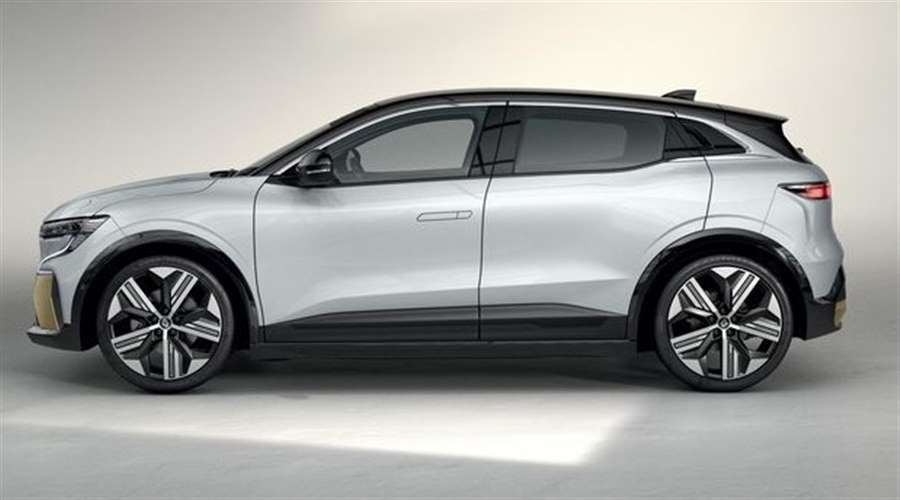
In addition, the interior offers more space thanks to a larger number of compartments for extra comfort and convenience.
The Megane E-Tech Electric is based on a modular CMF-EV platform developed for electric vehicles of the French-Japanese alliance, and it is a compact vehicle with which the French will compete with Volkswagen's electric model ID.3. The electric Megane also indicates its dimensions, since the length of the serial model will remain at the concept level (length 4210 mm, width 1800 mm, height 1505 mm, wheelbase 2700 mm).
An electric motor with 217HP and 300 Nm, 60 kWh batteries, front-wheel drive and autonomy of about 470 km are expected. Acceleration from 0 to 100 km / h is announced to take less than 8 seconds.
Also, a more affordable version with 40 kWh batteries is expected, and it is possible that a variant with higher capacity batteries and longer autonomy will appear later, as well as the one with two electric motors and all-wheel drive.
Production will take place at Renault’s Douai plant in France, along with the electric Renault 5 that was introduced even earlier.
Toyota will offer two "SUS - hydrogen complexes" by 2023
Those eagerly awaiting news from Toyota on the subject of hydrogen-powered internal combustion engines are just getting their dose of luck. Namely, the Japanese manufacturer will launch two hydrogen four-wheelers by 2023, and they will be part of the range of basic models, namely the Corolla and Prius.
Toyota, as a company that pioneered electrification thanks to the Prius, lost momentum in the process and crystallized from the flagship of electromobility as one of the brakes. It is true that the Japanese brand still does not have a single battery model on the market that will stop being supplied to cars powered by internal combustion engines by 2035. The concept unveiled by Toyota, the bZ4X crossover will debut in series form as an electric car only next year, and this explains why the Japanese are trying to extend the life of the internal combustion engine as much as possible.
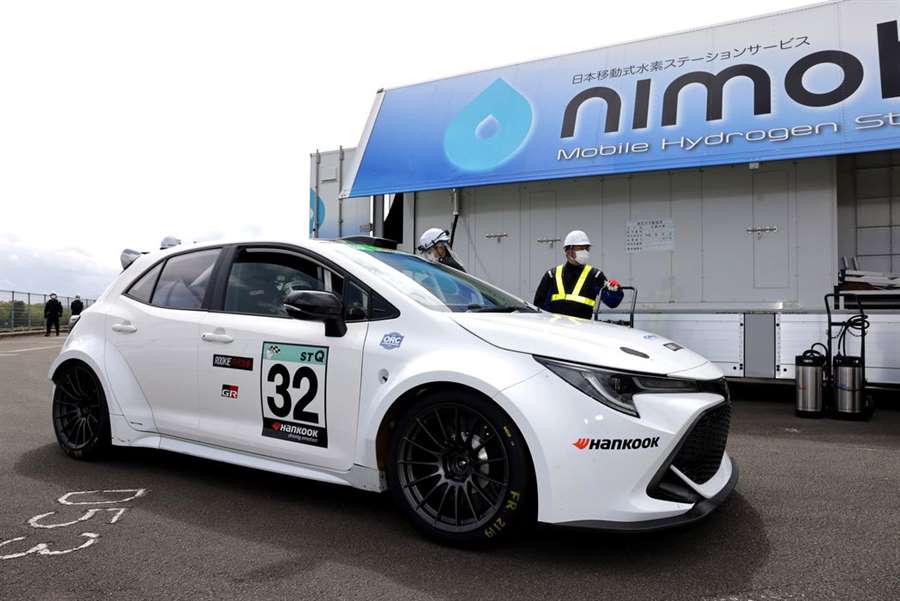
Remaining in the same context, it is no surprise that Toyota continues to play the oil lobby game and announces the promotion of new models that use hydrogen as an energy source, as well as a powertrain that includes an SUS engine. These are not electric cars, such as those with hydrogen fuel cells (like Mirai for example), but those that burn hydrogen in a very similar way to that seen with thermal engines. In the future, we will see the Corolla and Prius, which will rely on hydrogen as an energy source, in internal combustion engines, as well as in a hybrid powertrain.
We have already explained why hydrogen has no chance as a fuel in the automotive industry, and on that occasion we have listed all the relevant facts. We will briefly repeat the basic reasons: cars from the FCEV segment are drastically more expensive than those from the BEV category; hydrogen propulsion systems are significantly more complex (which also served as the title motif of this article); hydrogen propulsion systems are very inefficient, so energy losses often exceed 50% (in the BEV segment they are up to 20%); hydrogen transport and distribution are extremely complex; and probably the most important is that the production of hydrogen is very energy demanding, so the benefits of obtaining a certain amount of hydrogen are not large enough to compensate for the production costs themselves, not to mention the rest (distribution costs, transport…).
We can add to the list of reasons we have presented that the combustion of hydrogen is not completely clean, since the main component of air is nitrogen, so by using hydrogen in the SUS engine, the result is the evaporation of the infamous nitrogen oxides. Pride, although the most widespread chemical element in nature, is for some reason produced by methane extraction, which again generates harmful emissions, with a huge consumption of electricity.
The original Toyota Prius, as the first serial hybrid car, was introduced at the end of the last century and reached its first customers in 1997, and today the same model is offered in several editions, starting from a regular hybrid to a rechargeable one. For the next generation of this model, which is expected to be promoted during the winter, Toyota will also offer a hydrogen powertrain, which will be the first time that someone combines two technologies: hydrogen and hybrid.
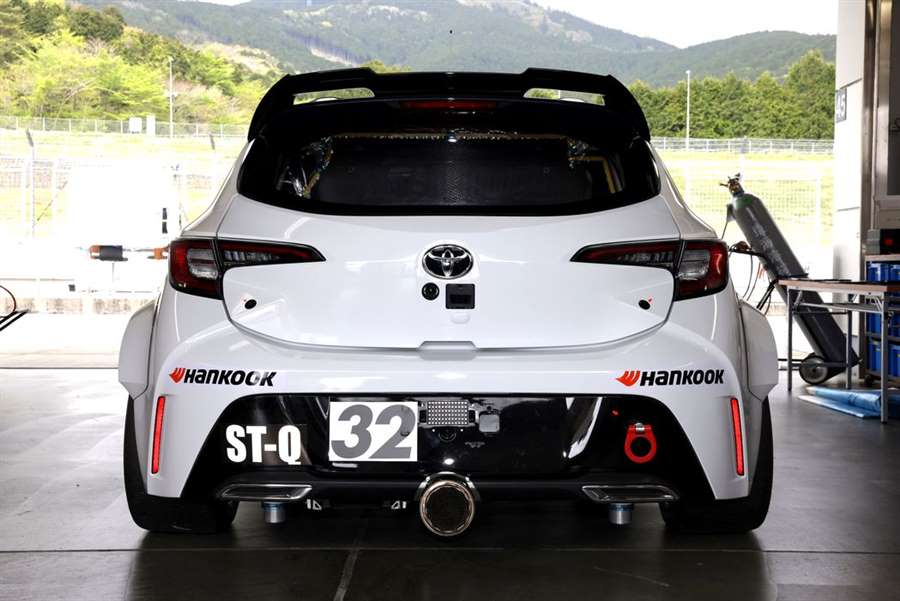
We have written about Toyota's plans with hydrogen SUS powertrains before, so it was also about the participation of the hydrogen-powered Corolla in the endurance race in Japan, which lasts 24 hours. Now, industrial sources have confirmed that Asians are planning to offer a serial model of this type, starting in 2023. Clearly, there will be no hydrogen fuel cells, but hydrogen will burn in the thermal engine.
In 2019, Toyota explained why it favors hybrid over battery technology, citing the “fact” that hybrid vehicles cause better environmental effects than battery-powered ones. That is why the Japanese planned to produce less than 30,000 electric cars and more than 1.5 million hybrids.
In the end, it is difficult not to recall the fates of Kodak and Nokia, which also ignored market trends, relying on their size and dominant position in the market. Regardless of the future of hydrogen, Toyota seems to have entered that same spiral of sadness.
Jogger revealed: New Dacia between SUV and station wagon
Today, the Romanian brand unveiled its brand new model called the Jogger. It is a family car of the C-segment, which is a mix of SUV and station wagon. It is also the longest Dacia, and can accommodate seven passengers. It has been announced that it will cost less than 15,000 euros.
After the electric electric model Spring, then the popular hatchback Sandero, the Logan sedan and the Duster SUV, Dacia has now decided to offer a seven-seater to the market. Jogger is practically the successor of the MPV model Lodgy, and is created on Renault's CMF-B platform (Renault Clio, Captur, Nissan Juke…)
According to the company, the Jogger has the length of a caravan, the spaciousness of an MPV and the robust look of an SUV.
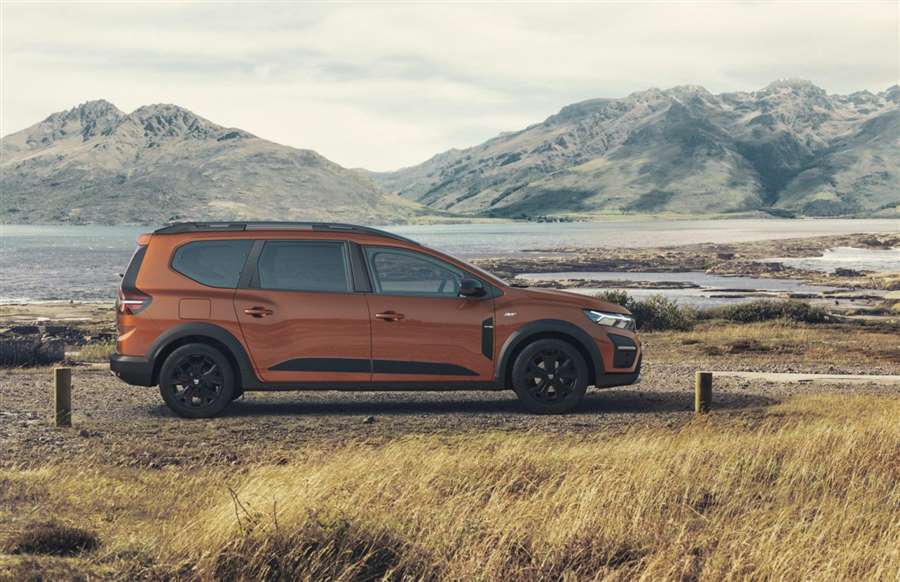
Upon appearance, it will be offered with a TCe 110 petrol engine (3 cylinders, 1.0 l, 190 Nm) paired with a 6-speed manual transmission, as well as an ECO-G 100 engine that has factory-installed auto-gas.
And, in two years, the first hybrid of the Romanian brand will arrive, which they say will be the cheapest seven-seater with a hybrid drive on the market. It will use a 1.6-liter gasoline engine in combination with two electric motors.
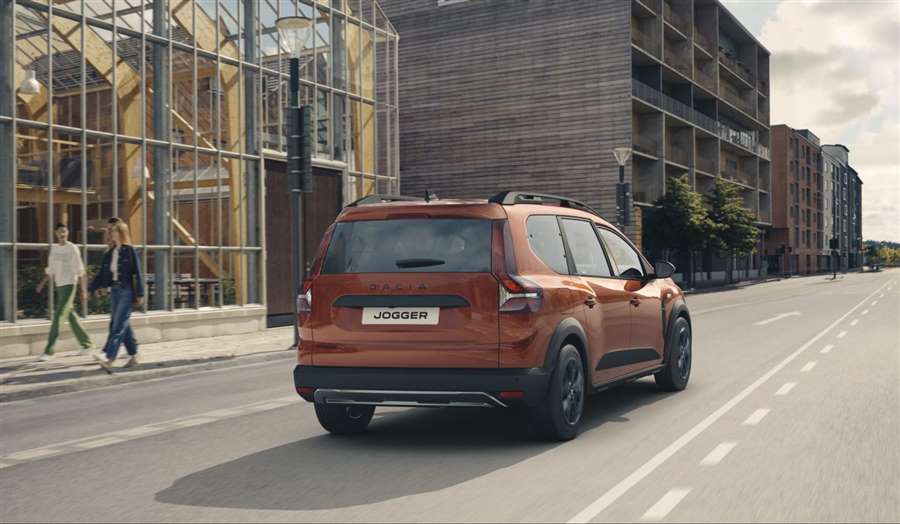
The Jogger is 4.5 meters long and is currently the longest Dacia on offer, and has as much as 2.9 meters of wheelbase, which clearly shows how much space there is in the cabin.
The front received LED lights in Y shape known from other new models from Romania, while from the side it is clear that it is a robust model, so it has protective plastics on the edges around the wheels, while the distance from the ground is as much as 200 mm.
At the rear are upright lights, which visually add to the width of the vehicle. The luggage space can vary depending on the configuration, so when 5 seats are used, the capacity is 708 liters, and with 7 it is 160 liters. The largest trunk volume is 1,819 liters.
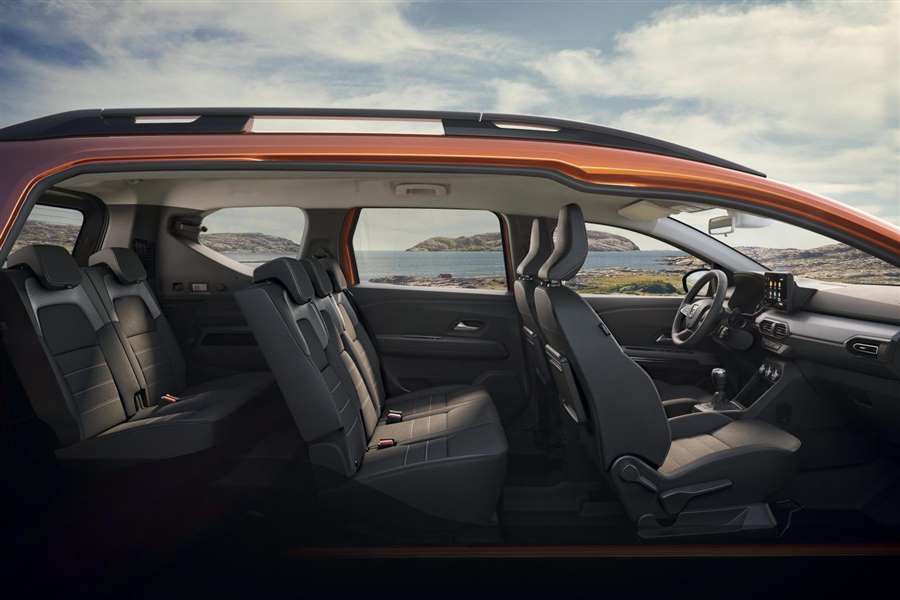
The cabin is modern and practical, already known from other new Dacia models, so there are soft materials on the dashboard and doors, at the top of the console is a multimedia system, and below are the air conditioning controls. The cabin has a total volume of 24 liters in storage for small items.
The jogger also comes with an automatic braking system, offers blind spot warning, parking assistant, uphill assistance, etc.
What a cabin: The successor to the Audi A8 looks unreal
There are no visible screens, and everything is digitized. The steering wheel and pedals may disappear when they are not needed. Rear passengers sit on sofas. This is a "private plane, but for the trip." The successor to the Audi A8 will be the electric, autonomous GT coupe-sedan, and the public will see it for the first time at the upcoming Munich Motor Show. However, before the official premiere, the German premium manufacturer revealed photos of a concept that introduces a radical design for the future flagship of the brand.
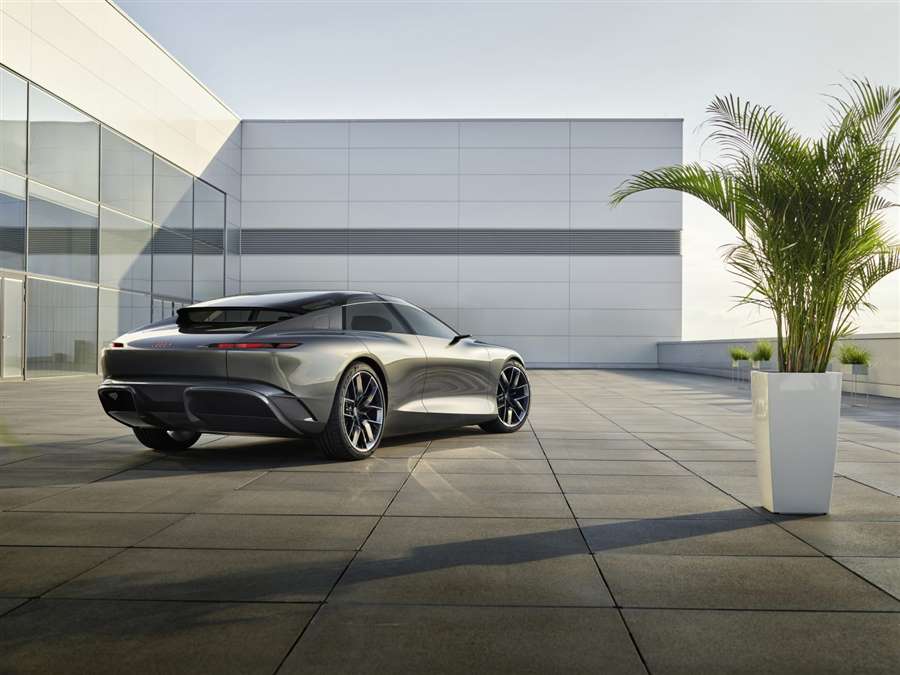
Audi described the concept as a "private plane but for the road", because it will be equipped with a fourth level of autonomous driving. This means that Grandsphere will drive its passengers on its own when needed. Then the steering wheel and pedals are automatically retracted into their housings.
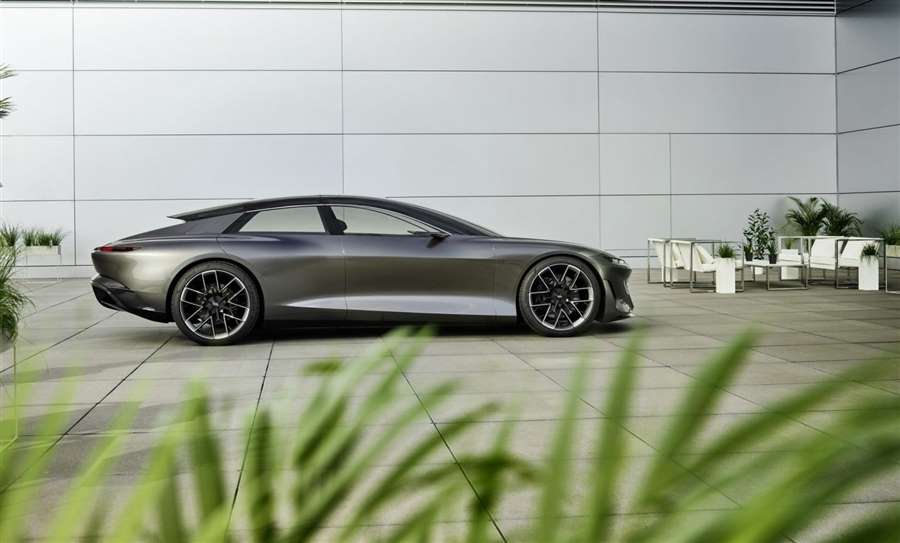
Perhaps most unusual of all is the design solution that there are no visible screens, buttons and physical controllers in the cabin.
After starting, the most important information for each passenger is projected on the entire front part, and the screens are actually imperceptibly integrated into the front panel, which displays their contents.
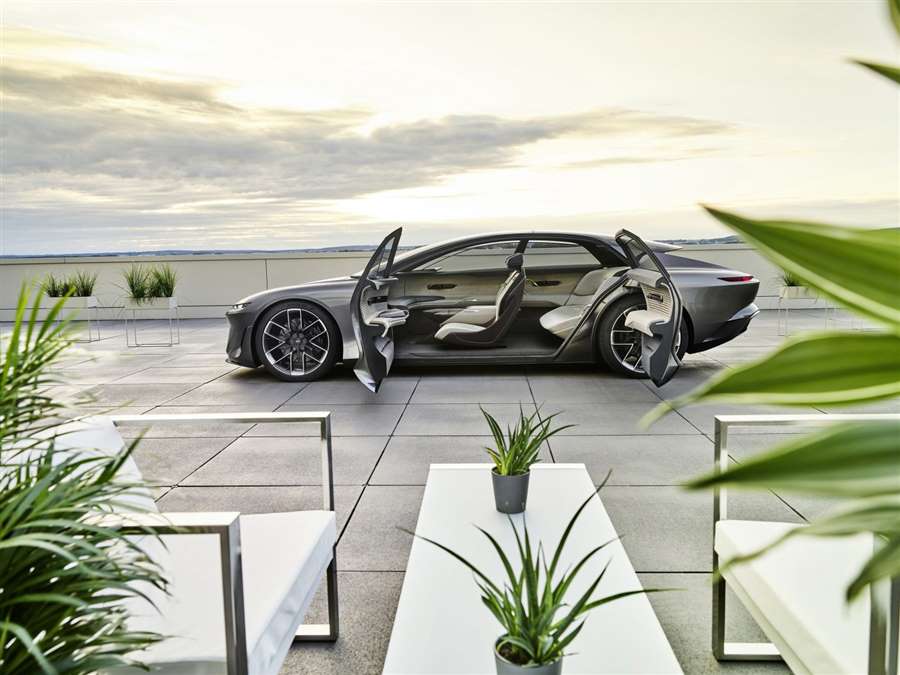
The rear doors open to the opposite side and there is no B-pillar here to make access to the cabin easier. Passengers are greeted with personalized audio and visual digital messages, while the air conditioning and seat position are automatically adjusted exactly to the measurements of their users as soon as they are accommodated.
"The first class has switched to the front of the cab," they say from Audi because controlling the vehicle no longer has to depend on the driver. That is why, for example, the front seats are designed for maximum comfort, and the front seats can be lowered up to an angle of 60 degrees. There is nothing worse in the back either, because the passengers are sitting on the sofa.
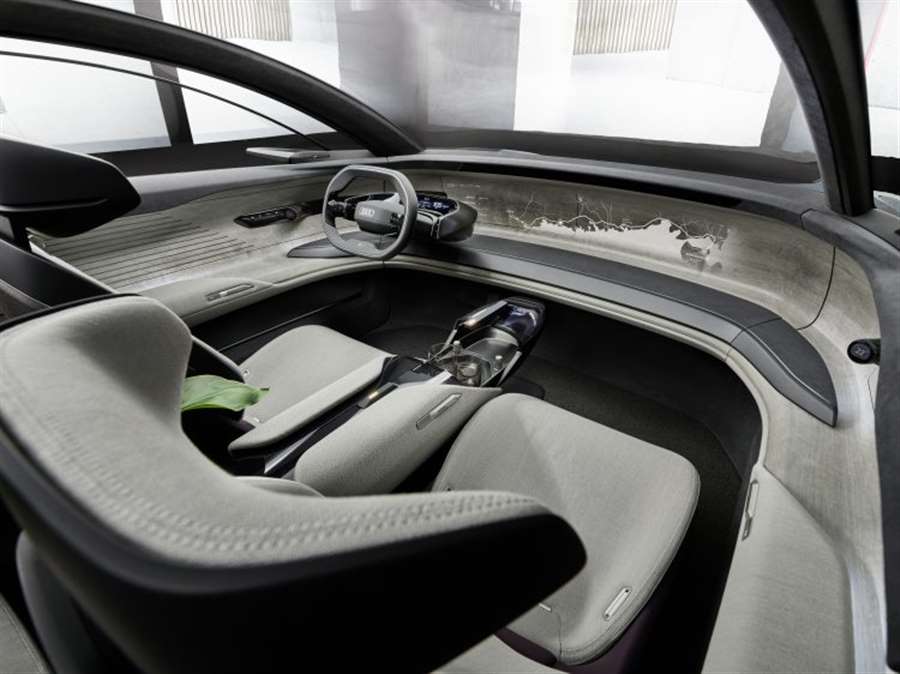
As this is a luxury concept, the air in the cabin is filtered, the temperature is adjusted automatically, and if necessary, a pleasant smell can spread through the interior. Between the front seats is a refrigerator with two glasses and a specially designed bottle.
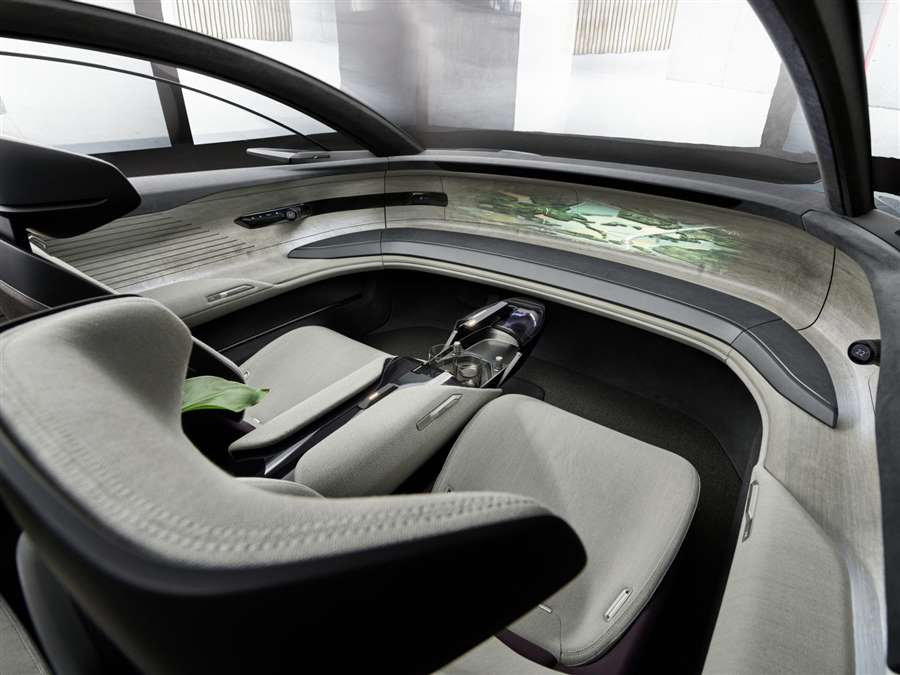
As long as 5,350mm, 2,000mm wide, Grandsphere offers a wheelbase of more than 3 meters (3,190mm). This means that the future model is much longer than the extended version of the current A8. But, from Audi, they emphasize that this is a more four-door coupe, and not a traditional limousine.
With a low silhouette, a very aerodynamic design comes with a long hood despite being an electric car.
It looks like a bullet in the back for better efficiency. It is not yet certain how much the serial model will look like the concept, writes Autocar, but it is most likely that it will not have 23-inch wheels.
The concept is based on the new PPE platform, which was created in cooperation with Porsche, and on which the new Audi Q6 and Macan will be built.
Grandsphere uses a 120 kW battery that will provide a range of as much as 750 km, while the twin-electric motor will have 720 horsepower and 960 Nm. In theory, acceleration from 0-100 km / h is about 4 seconds.
Recorded new Opel Astra Sports Tourer
Opel has officially and with justifiably great ambitions presented the new generation of the Astra, but the development path is not over, because a new, station wagon body shape is being prepared.
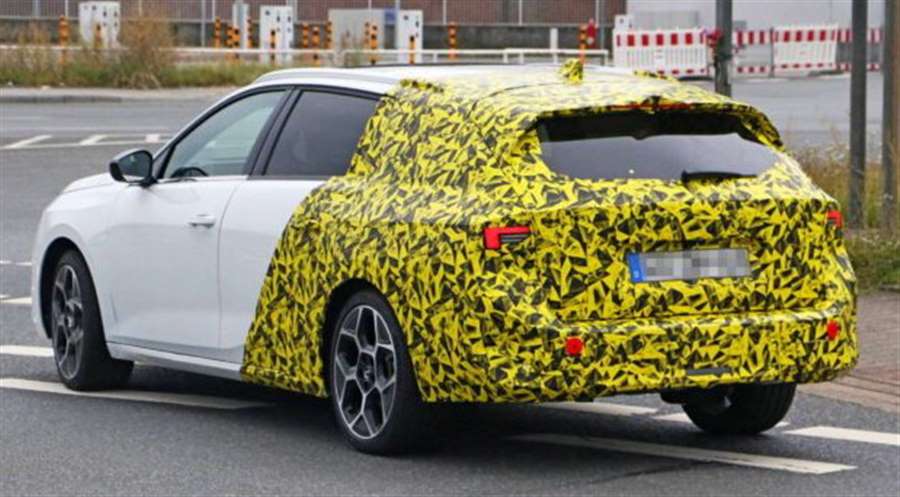
Spy photographers had the opportunity to capture a prototype with an extended roofline and camouflaged rear end.
The front part does not differ from the just presented model, but the rear one brings a surprise, and obviously more space in the trunk.
The resemblance to the Peugeot 308 SW exists, as the Opel Astra Sports Tourer will retain the desired elegance that customers expect.
On the technical side, the Astra Sports Tourer will rely on the standard model, so the same range of powertrains is expected.
Although not officially announced, the Astra Sports Tourer can be expected later this year, meaning the first showroom models could be expected during 2022.
Dacia Jogger is embarking on a market jog
Dacia Jogger is a new name in the automotive sky of the planet. It can be said that a new generation of Logan caravan derivative is ahead of us, which then further implies that the Romanian company returned to the concept of the first Logan MCV from 2006, which was later transformed into the Russian Lada Largus.
We will remind you that the second generation of the Dacia Logan MCV model was in the traditional caravan form, and was supplemented by a full-blooded representative of the MPV segment, the compact Dacia Lodgy model, which even offered three rows of seats. But, what these models offered did not bring any luck to the creators, so they were again replaced by one model that was supposed to be intended to satisfy a wider group of needs.
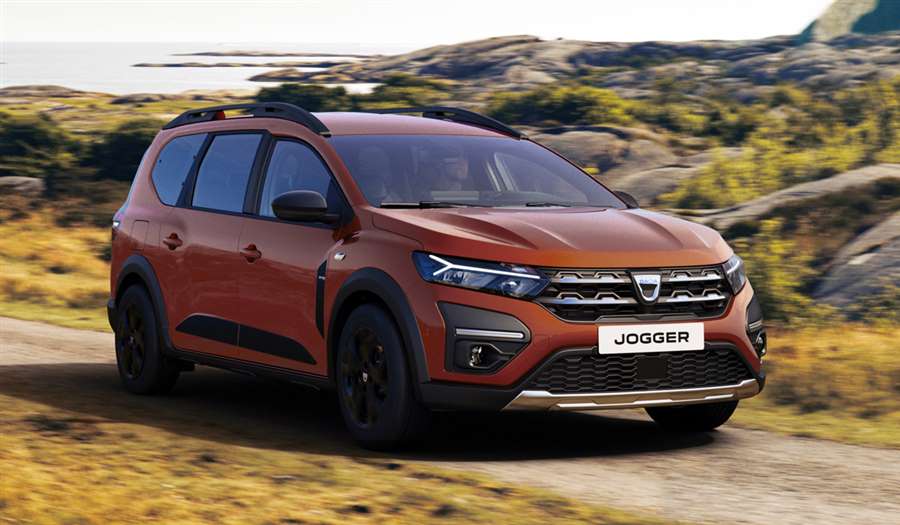
Similar to what was offered by the first generation Logan MCV (or the mentioned Russian Largus), the Jogger combines the qualities of an ordinary caravan and a compact van, so to speak, a minivan :).
The front of the novelty replicates what we saw on the third-generation Logan, with the Jogger offering an extended wheelbase, a raised roofline, as well as a third-row seat. The designers also spiced up this model with elements that are associated with crossovers, so the minimum distance of the lowest point of the chassis of the minivan from the ground, at the level of 20 centimeters, was declared, while the Extreme version is also available.
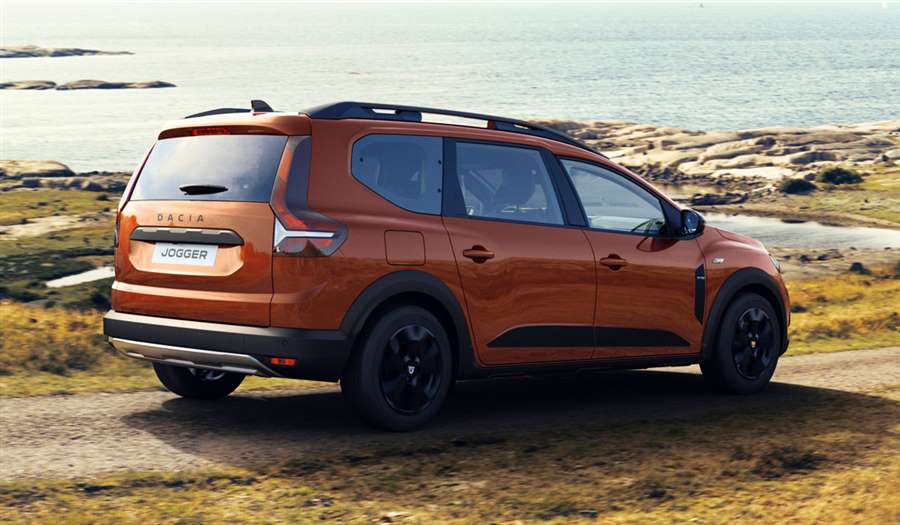
This is exactly how the copy is equipped and given through promotional photos, and it flaunts accessories that flirt with the off-road experience. So even though you see plastic accessories on the bodywork, don’t get carried away because the drive wheels are just the ones in front of the driver.
The Romanian Jogger is slightly inferior in terms of the range between the front and rear axles in relation to: 2,897 mm compared to 2,905 mm. But, things change when the length of two cousins is analyzed, so the Romanian offers 4,547 millimeters instead of the Russian 4,488 mm, and this is the longest model from the current Dacia range. Also, the new caravan is wider and taller than the Largus, because it extends to 1,784 mm and 1,632 mm in those directions.
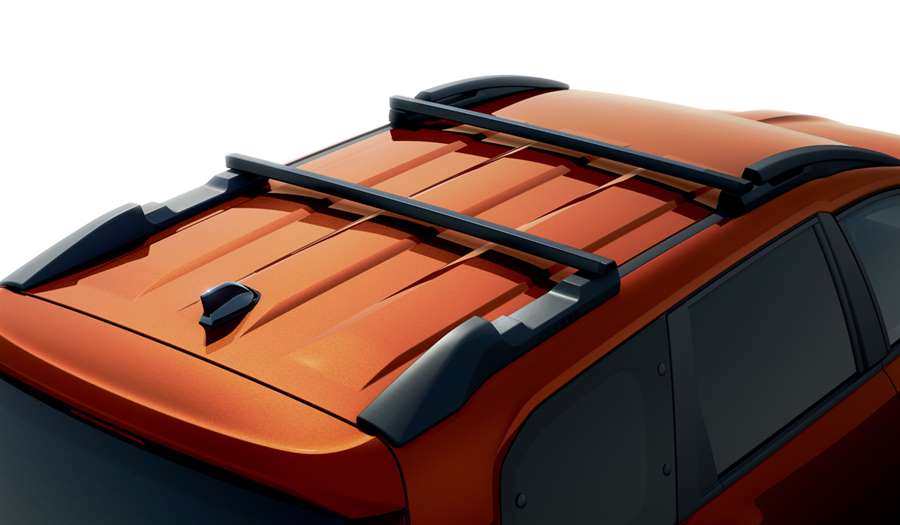
The openings of the rear doors are larger than those in the front, while the one-piece doors are mounted on the stern, instead of solutions that rely on mounted hinges.
The basic equipment of the novelty will include so-called dipped headlights in LED technology with roof rails and transverse elements that facilitate the transport of luggage above the passengers' heads. Their load capacity is up to 80 kilograms, and a special piquancy is that they can be mounted and dismounted without the use of tools.
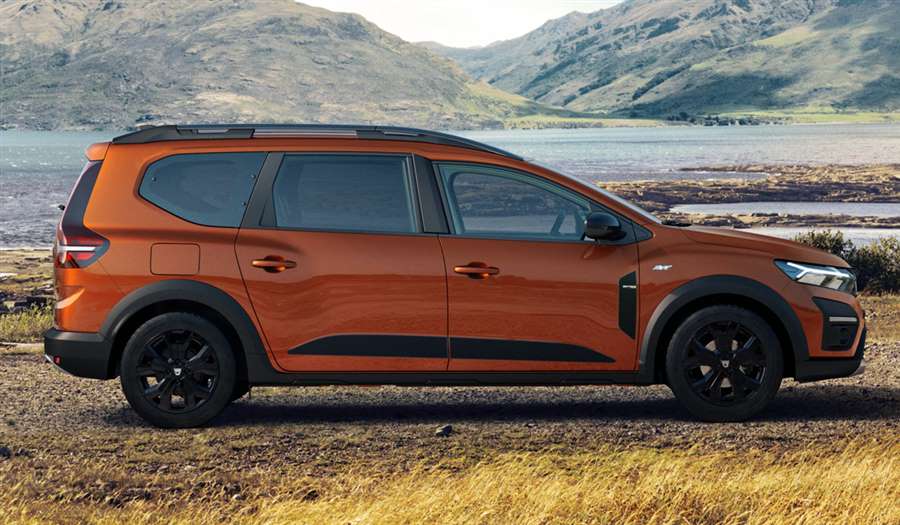
Those who have been involved in the development of a particular four-wheeler immodestly claim that the level of functionality of the Romanians can be compared to that offered by that multipractical Swiss folding knife, which we have all certainly seen in the past. They also find support for the claim in the fact that 64 seating configurations are available, for example.
However, the basic version offers only two rows of seats, while the rear is raised by 55 millimeters compared to the front, while small folding tables are provided, albeit as part of the optional equipment (similar to the situation with the introductory Logan). On the list of accessories, we also read the presence of the third row of seats, which is raised by another 25 millimeters (compared to the middle row), in which way the company sleeps carefree, because they do not expect complaints from users, which would call for difficult access to the rear row seats, where they say that they can connect and give a man a full format (thinking of a purely physical aspect, regardless of moral size).
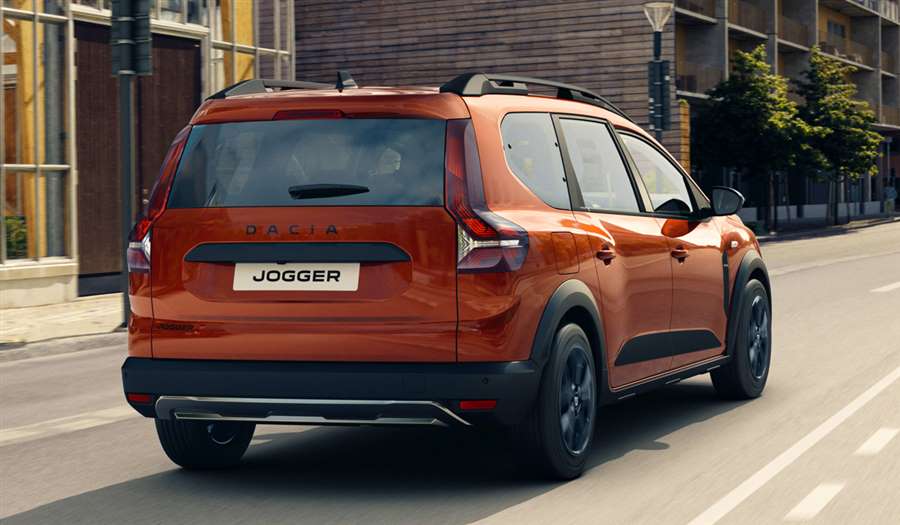
For the end of this mini-chapter, let's mention that the joggers that allow the densest occupancy in the cabin, offer windows in the height of the third row, but they can only be opened, but not opened in the same way as other side glass openings.
The space in the trunk has two bags for bags as well as a socket from which a current springs whose voltage is at the level of 12 volts. In the five-seater, the trunk has a volume of 708 liters and is 1,150 millimeters long. Fold down the seats in the second row and you will get a loading volume of an impressive 1,819 liters.
The seven-seater Jogger is practically completely devoid of trunk. Come on, we don't have to overdo it, it has it as well as a well-equipped quad, ie it offers 160 liters, which is more than Largus' 135 liters). But when the third row is assembled, the volume grows to 565 liters (plus five in relation to Largus). Things are improved by the fact that in various smaller pantries, scattered around the passenger cabin, people in the vehicle have a 24-liter pantry at their disposal.
The front section of the cabin replays what was seen in the original Logan. The steering wheel is adjustable in both height and depth, while the basic version does not offer any music device. Instead, the Media Control system is installed. It includes two speakers that can be connected to the appropriate gadget, and there is also a USB port, as well as an active function of connectivity via Bluetooth.
The owner can connect to the software and devices on the car if he decides to install a special phone application, and then his role as a standard multi

